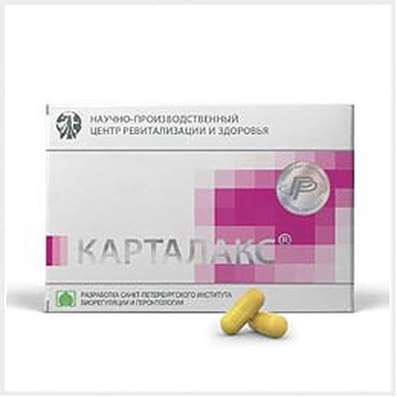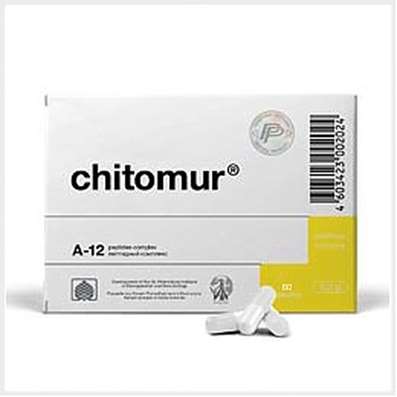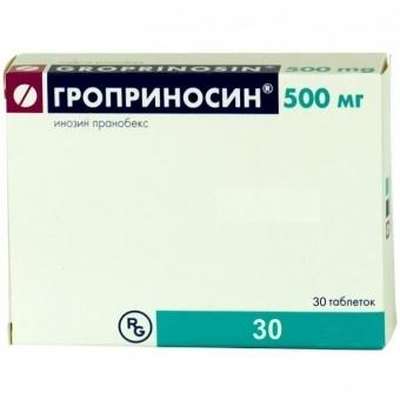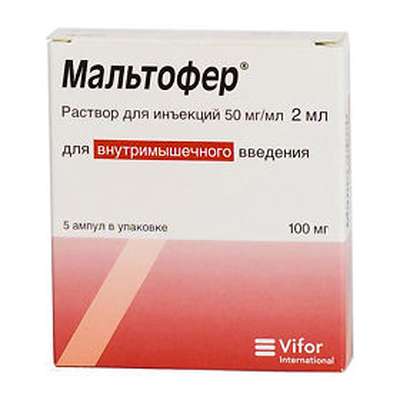Instruction for use: Mydocalm
I want this, give me price
Active substance: Tolperisone
ATX Code
M03BX04 Tolperisone
Pharmacological group
Miorelaxant of central action [n-cholinolytics (muscle relaxants)]
The nosological classification (ICD-10)
G04 Encephalitis, myelitis and encephalomyelitis
Disseminated acute encephalomyelitis, Leukoencephalitis, Meningomielitis, Myelitis, Acute encephalitis, Acute encephalomyelitis, Chronic encephalitis, Chronic encephalomyelitis, Encephalitis, Encephalomyelitis, Inflammation of meninges
G24 Dystonia
Violation of muscle tone
G24.8.0 * Muscle hypertonicity
Increased muscle tone, The spasm of the striated muscles due to organic diseases of the CNS, muscle Spasticity, Painful muscle spasms in spinal diseases, Increased skeletal muscle tone
G25.9 Extrapyramidal and movement disorder, unspecified: bradykinesia; Restlessness; Movement disorders; Meiji syndrome; Muscle rigidity Muscle spasticity; Muscle tension; Pyramidal disorder; The defeat of the pyramidal tract; The rigidity of the muscles; Extrapyramidal syndrome; Spastic paralysis; Extrapyramidal hyperkinesia.
G35 Multiple sclerosis
Disseminated sclerosis, multiple sclerosis, Relapsing Multiple Sclerosis, Secondary progressive multiple sclerosis, Exacerbation of multiple sclerosis, Mixed forms of multiple sclerosis
G80.0 Spastic Cerebral Palsy
Little's disease, Spastic Pallas, Little disease
G93.4 Unspecified encephalopathy
Bilirubin encephalopathy, Lacunar status, Tremor in portal-systemic encephalopathy, Latent hepatic encephalopathy, Atherosclerotic encephalopathy, Hypertonic encephalopathy, Hypoxic encephalopathy, Dysmetabolic encephalopathy, Encephalopathy,Defeat of the brain, Porto-caval encephalopathy, Vascular encephalopathy, Traumatic encephalopathy, Encephalopathy, Encephalopathy of secondary origin, Encephalopathy dyscirculatory, Encephalopathy portocaval, Epileptic encephalopathy, Syndrome of hemorrhagic shock and encephalopathy, Subacute spongiform encephalopathy
G99.2 Myelopathy in diseases classified elsewhere
Myelopathy, Chronic myelopathy
I64 Stroke, not specified as hemorrhage or infarction
Primary stroke, Stroke, Stroke in the course of, microstroke, stroke, The completed stroke
I70.2 Atherosclerosis of the arteries of the extremities
Arteriosclerosis obliterans, Arteriosclerosis of peripheral arteries, Atherosclerosis of lower limb arteries, Atherosclerosis of peripheral arteries, Atherosclerosis of the vessels of the extremities, Obliterating disease of lower extremities, Obliterating atherosclerosis, Obliterating arteriosclerosis of lower limb arteries, Obliterating arteriosclerosis of the vessels of the upper limbs, Obliterating atherosclerosis of vessels of lower extremities, Atherosclerosis of the arteries of the extremities,Arteriopathy of the extremities, Obliterating atherosclerosis of the vessels of the extremities, Obliterating arteriosclerosis
I73.0 Raynaud's Syndrome
Reynaud-Lerish syndrome, Raynaud's disease, Raynaud phenomenon, Reynaud-Lerish syndrome, Raynaud's disease, Reynaud's syndrome with trophic disorders, Peripheral angiopathy
I73.1 Obliterating thromboangiitis [Buerger's disease]
Berger's disease, Thromboangiitis obliterans, Thromboangiitis, Obliterating thromboangiitis
I73.8 Other specified peripheral vascular diseases
Intermittent claudication syndrome, Endarteritis obliterans, Acrocyanosis, Peripheral angiospasm, Obliterating endarteritis, Intermittent claudication, Disorders of innervation of blood vessels, Spasm of peripheral arteries, Arterial angiopathy, Venous insufficiency and its complications, Spasm of peripheral vessels, Spasm of the coronary vessels, Endarteritis, Cooling of the feet, Occlusion disorders of peripheral circulation, Occlusion of peripheral vessels
I79.2 Peripheral angiopathy in diseases classified elsewhere
Diabetic angiopathy, Angiopathy in diabetes mellitus, Diabetic arteriosclerosis, Pain in peripheral nerve lesions, Diabetic angiopathy, Diabetic microangiopathy, Diabetic vascular injury, Intermittent angioedema dysbasia, Macroangiopathy in diabetes mellitus, Microangiopathies, Microangiopathy, Microangiopathy in diabetes mellitus, Tingling sensation in the arms and legs, Sensation of coldness in the extremities, Peripheral Angiopathy, Peripheral artery disease, Sclerosis of Menkeberg, Chronic obliterating diseases of the arteries
M19.9 Arthrosis, unspecified
Change in brush with osteoarthritis, Osteoarthritis, Osteoarthrosis, Arthrosis of large joints, Pain syndrome in osteoarthritis, Pain syndrome in acute inflammatory diseases of the musculoskeletal system, Pain syndrome in chronic inflammatory diseases of the musculoskeletal system, Deforming arthrosis, Deforming osteoarthritis, Deforming osteoarthritis of joints, Osteoarthritis in the acute stage, Osteoarthritis of large joints, Acute pain syndrome with osteoarthritis, Post-traumatic osteoarthritis, Rheumatic osteoarthritis, Spondylarthrosis, Chronic osteoarthritis
M34.0 Progressive systemic sclerosis
M47 Spondylosis
Spondyloarthrosis, spondylarthrosis, Diseases of the spinal column, spondylosis
M47.8 Other spondylosis
Bamboo spine, Cervical spondylosis, Spondylosis of the cervical deforming, Cervical spondylosis
M54.4 Lumbago with sciatica
Pain in the lumbosacral spine, Lumbago, Sciatica, Lumbar syndrome
M62.4 Contracture of muscle
Neurological contractures with spasms, Muscular contracture
R25.2 Cramp and spasm
Muscle spasms in tetanus, Pain smooth muscle spasm, Pain spasm of smooth muscles (renal and biliary colic, intestinal spasms, dysmenorrhea),Pain spasm of smooth muscles of internal organs, Pain spasm of smooth muscles of internal organs (kidney and biliary colic, intestinal spasms, dysmenorrhea), Painful muscle spasm, mimic spasm, spasticity, Muscle spasms, Muscle spasms of central origin, Muscle spasms, Neurological contracture with spasms, Night cramps in the extremities, Night leg cramps, Symptomatic convulsive state, West syndrome, Smooth muscle spasm, Spasm of vascular smooth muscle, muscle spasm, The spasm of the striated muscles due to organic diseases of the CNS, Skeletal muscle spasm, The spasms of smooth muscles of internal organs, The spasms of skeletal muscles, Spastic condition of striated muscle, Spastic pain, Spasmodic state of smooth muscle, Spasticity skeletal muscle, muscle cramps, convulsions, Leg cramps, Seizures of central origin, convulsive states, Spastic syndrome, Convulsive status in children, Tonic seizures, Cerebral spastic syndrome, Phenomenon jackknife
R26.2 Difficulty walking, not elsewhere classified
Intermittent angioedema dysbasia
Z100 * CLASS XXII Surgical practice
Abdominal surgery, adenomectomy, Amputation, Coronary angioplasty, Angioplasty of the carotid arteries, Antiseptic skin treatment for wounds, Antiseptic Hand, Appendectomy, atherectomy, Balloon coronary angioplasty, Vaginal hysterectomy, The coronary bypass, Interventions in the vagina and cervix, Interventions on the bladder, Intervention in the mouth, Restoration and reconstructive surgery, Hand hygiene of medical personnel, Gynecologic surgery, Gynecological intervention, Gynecological surgery, Hypovolemic shock during operations, Disinfection of purulent wounds, Disinfection of wounds edges, Diagnostic intervention, Diagnostic procedures, Cervical Diathermocoagulation, Long-surgery, Replacing the fistula catheters, Infection in orthopedic surgery, Artificial heart valve, cystectomy, Short-term outpatient surgery, Short-term operation, Short surgical procedures, Krikotireotomiya, Blood loss during surgery, Bleeding during surgery and in the postoperative period, Kuldotsentez, laser photocoagulation, laser coagulation, retinal laser coagulation, Laparoscopy, Laparoscopy in Gynecology, CSF fistula, Small gynecological operations, Small surgical procedures, Mastectomy and subsequent plastic, mediastinotomy, Microsurgical operations on the ear, Mukogingivalnye operation, suturing, Minor surgery, neurosurgical operation, Immobilization of the eyeball in ophthalmic surgery, testectomy, pancreatectomy, Perikardektomiya, The period of rehabilitation after surgery, The period of, convalescence after surgery, Percutaneous transluminal coronary angioplasty, Pleural thoracentesis, Pneumonia postoperative and posttraumatic, Preparation for surgical procedures, Preparation for surgery, Preparation of the surgeon's hands before surgery, Preparation of the colon for surgical procedures, Postoperative aspiration pneumonia in neurosurgical and thoracic surgery, Postoperative nausea, Postoperative bleeding, postoperative granuloma, postoperative shock, The early postoperative period, myocardial revascularization, Radiectomy, gastric Resection, bowel resection, uterine Resection, liver Resection, enterectomy, Resection of part of the stomach, Reocclusion of the operated vessel, Bonding tissues during surgical procedures, Removal of sutures, Condition after eye surgery, Condition after surgery, Condition after surgery in the nasal cavity, Condition after gastrectomy, Status after resection of the small intestine, Condition after tonsillectomy, Condition after removal of the duodenum, Condition after phlebectomy, Vascular surgery, Splenectomy, Sterilization of surgical instruments, Sterilization of surgical instruments, sternotomy, Dental surgery, Dental intervention in periodontal tissues, strumectomy, Tonsillectomy, Thoracic surgery, total gastrectomy, Transdermal intravascular coronary angioplasty, Transurethral resection, Turbinektomiya, Removal of a tooth, cataract surgery, Removal of cysts, tonsillectomy, Removal of fibroids, Removing the mobile primary teeth, Removing polyps, Removing broken tooth, Removal of the uterus body, Removal of sutures, Urethrotomy, Fistula likvoroprovodyaschih ways, Frontoetmoidogaymorotomiya, Surgical infection, Surgical treatment of chronic limb ulcersm, Surgery, The surgery in the anal area, The surgery on the colon, Surgical practice, The surgical procedure, Surgical interventions, Surgery on the gastrointestinal tract, Surgical procedures on the urinary tract, Surgical procedures on the urinary system, Surgical intervention of the genitourinary system, Surgical procedures on the heart, Surgical manipulation, surgery, Surgery on the veins, Surgical intervention, Vascular surgery, Surgical treatment of thrombosis, cholecystectomy, Partial gastric resection, transabdominal hysterectomy, Percutaneous transluminal coronary angioplasty, Percutaneous transluminal angioplasty, Coronary artery bypass, tooth Extirpation, Extirpation of milk teeth, pulpectomy, pulsative cardiopulmonary bypass, tooth Extraction, teeth Extraction, cataract extraction, Electrocoagulation, endourological intervention, episiotomy, Etmoidotomiya, Complications after tooth extraction
Z54.0 recovery period after surgery
Conditions after brain surgery, Status after removal of gallstones, Conditions after surgery, The recovery period after surgery, The period of convalescence after surgery, The rehabilitation period after surgery, The period of rehabilitation after surgery, The period of convalescence after surgery, The period of convalescence after surgery, Convalescence in the postoperative period, The period of recovery after surgery on the eyes, The period after hemorrhoidectomy, The period after the surgery, The period of postoperative rehabilitation, The period of rehabilitation after injury
Composition
Tablets, coated with a film membrane 1 tab.
active substance:
Tolperisone hydrochloride 50 mg\ 150 mg
Auxiliary substances: citric acid monohydrate - 0.73 / 2.19 mg; Silicon dioxide colloidal - 0.8 / 2.4 mg; Stearic acid - 1.7 / 5.1 mg; Talc - 4,5 / 13,5 mg; MCC - 14/42 mg; Corn starch - 29.77 / 89.31 mg; Lactose monohydrate 48.5 / 145.5 mg
Membrane film: silicon dioxide colloid - 0.045 / 0.089 mg; Titanium dioxide (E171 - 77891) - 0.244 / 0.447 mg; Lactose monohydrate 0.392 / 0.785 mg; Macrogol 6000 - 0.392 / 0.785 mg; Hypromellose - 3.927 / 7.844 mg
Description of dosage form
Tablets of 50 mg: covered with a film coat of white or almost white color, round, biconcave, with a weak characteristic odor, with an engraving "50" on one side.
Tablets of 150 mg: film-coated white or almost white, round, biconvex, with a weak characteristic odor, engraved "150" on one side.
On the fracture: white or almost white.
pharmachologic effect
Pharmacological action - Muscle relaxant.
Pharmacodynamics
Miorelaxant of central action. The mechanism of action is not fully understood. Has a membrane-stabilizing, local anesthetic effect, inhibits the conductivity of pulses in the primary afferent fibers and motor neurons, which results in blocking of spinal mono- and polysynaptic reflexes. It also probably inhibits the release of mediators again by inhibiting the entry of Ca2 + into the synapses. In the brain stem eliminates the ease of carrying out excitation along the reticulospinal path. It enhances peripheral blood flow regardless of the influence of the central nervous system. In the development of this effect, the weak spasmolytic and adrenoblocking effect of tolperisone plays a role.
Pharmacokinetics
After ingestion, Tolperisone is well absorbed from the digestive tract. Cmax is achieved after 0.5-1 hour, bioavailability is about 20%.
Tolperisone is metabolized in the liver and kidneys. It is excreted in the urine in the form of metabolites (more than 99%). The pharmacological activity of metabolites is unknown.
Indications
Treatment of pathologically increased muscle tone and spasms of striated musculature arising from organic diseases of the central nervous system (affection of pyramidal tracts, multiple sclerosis, cerebral stroke, myelopathy, encephalomyelitis);
Treatment of increased tonus and muscle spasms, muscle contractures accompanying diseases of the movement organs (including spondylosis, spondyloarthrosis, cervical and lumbar syndromes, arthrosis of large joints);
Restorative treatment after orthopedic and traumatological operations;
In the combination therapy of obliterating vascular diseases (obliterating atherosclerosis, diabetic angiopathy, thromboangiitis obliterans, Raynaud's disease, diffuse scleroderma), diseases arising from the disorder of vascular innervation (acrocyanosis, intermittent angioedema dysbasia);
Little's disease (children's cerebral palsy) and other encephalopathies, accompanied by muscular dystonia.
Contraindications
Hypersensitivity to any of the components of the drug;
Myasthenia gravis;
Children's age till 3 years.
pregnancy and lactation
Due to the lack of data on use during pregnancy and breastfeeding, the use of Miodocalm® during these periods is not recommended.
Side effects
Muscle weakness, headache, arterial hypotension, nausea, vomiting, a feeling of discomfort in the abdomen. With a decrease in the dose, side effects usually go away. In rare cases, there are allergic reactions (skin itching, erythema, urticaria, angioedema, anaphylactic shock, bronchospasm).
Interaction
Data on the interactions that limit the use of the drug Midocalm® are not available.
Although tolperisone has an effect on the central nervous system, it does not cause sedation, so it can be used in combination with sedatives, hypnotics and preparations containing alcohol.
Does not affect the effect of alcohol on the central nervous system.
Tol- perisone enhances the action of niflumic acid, while simultaneous use of these drugs may require a reduction in the dose of niflumic acid.
Means for general anesthesia, peripheral muscle relaxants, psychotropic drugs, clonidine - enhance the effect of tolperisone.
Dosing and Administration
Inside, after eating, without chewing, squeezed a little water.
Adults and children from 14 years - usually starting with 50 mg 2-3 times a day, gradually increasing the dose to 150 mg 2-3 times a day.
Children from 3 to 6 years old - Mydocalm® is administered orally at a daily dose of 5 mg / kg; 7-14 years - 2-4 mg / kg (in 3 divided doses during the day).
Overdose
Data on the overdose of the drug Midokalm® was not received.
Treatment: recommended gastric lavage, symptomatic therapy. There is no specific antidote.
special instructions
Use strictly according to the doctor's prescription to avoid complications.
Influence on the ability to drive vehicles and mechanisms. Studies have not been carried out, but for many years of practice, no such information has been received.
Relies Form
Film coated tablets, 50 mg and 150 mg. In the blister of PVC / aluminum, 10 pcs. 3 blisters in a cardboard box.
Conditions of supply of pharmacies
On prescription.
storage Conditions
In a dry place, at a temperature of 15-30 ° C.
Keep out of the reach of children.
Shelf life
3 years.
Do not use after the expiry date printed on the package.

 Cart
Cart





